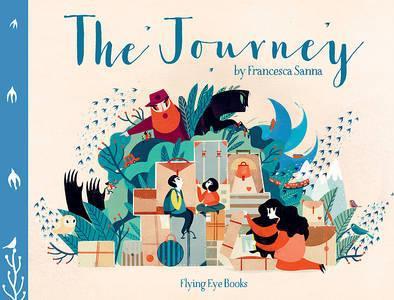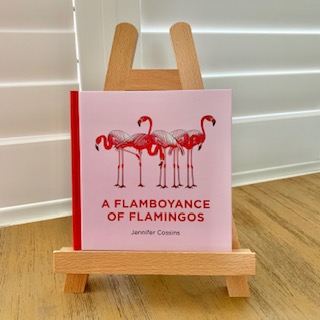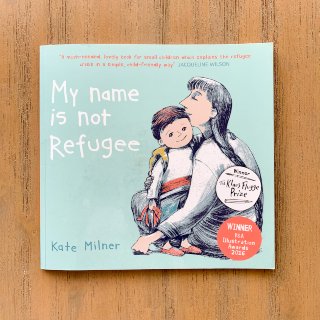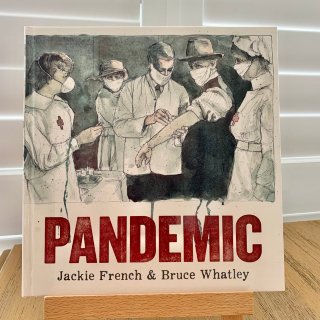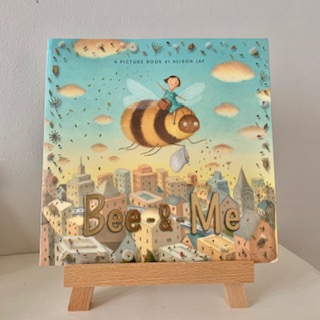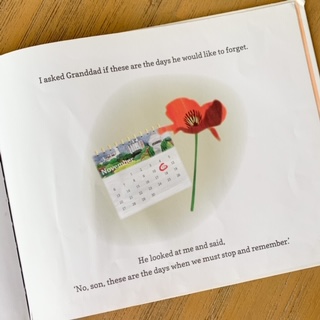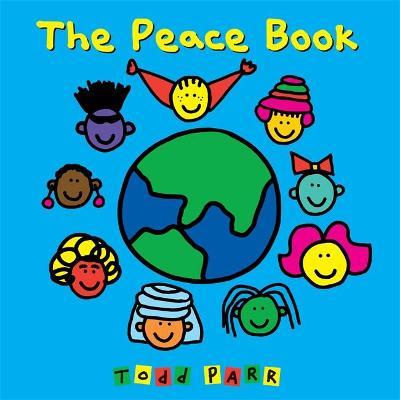The Journey
Free lesson plan, writing template and printable word-search puzzles for kids
Best suited to:
Years 2 – 6
KLAs covered:
English (visual literacy, point of view), PDH (empathy), geography
Learning:
- what is a refugee?
- why and how people become refugees;
- the journey of refugees: what happens when people leave their homes and seek safety in another country;
- how it feels to leave home and become a refugee;
- the difficulties and uncertainty encountered by refugees;
- how illustrators use colour and artistic techniques to create mood and emotion and to demonstrate relationships;
Need to know:
- the book begins by showing the family enjoying time together at the beach, just like families the world over;
- a mother and her son and daughter flee a war in their country after the children’s father has been killed;
- the story is told through the eyes of the little girl in the form of a simple narrative;
- the family initially flees in their car, then travels by getting lifts with other people, on foot, by ferry and finally by train;
- the family is fleeing Syria, though this is not stated;
- the graphical illustrations are powerful and unusual and engaging, for older children and for adults, as well as for younger children;
- the word refugee is not mentioned in the text. Migration is mentioned on the last page;
- the this book is suggested for 3-6-year-olds but I suggest using it for children aged up to 12 and even older;
- the author explains at the end of the book that the story was inspired by her meeting in a refugee centre in Italy with two girls who had made similar journeys. She wrote the book as a tribute to their plight and strength;
Discussion Questions (before reading):
- read the title and discuss the cover: what do you see? What do you think the story will be about? Who do you think the people on the cover are? How would you describe the illustrations and their style?
- read the author’s name and, for younger children, revise/introduce the words: author and illustrator. Why do you think there is only one name on the cover? (author and illustrator are the same);
- introduce/revise the meaning of the word chaos (complete disorder and confusion);
- introduce/revise the meaning of the words migrating/migration;
- introduce/revise the meaning of the word border (countries have borders with other countries; Australia does not because it’s an island);
- especially for younger children: what does the word journey mean? Does the word mean/imply a short trip or travelling for a long time?
- explain to the children that this book is based on true stories of some young refugees that the author met after they’d escaped from their country. Tell them that this kind of journey really happens;
- discuss the word refugee. What does it mean? (someone who has to leave their home because they are not safe there);
Discussion Questions (while reading):
(The numbers refer to each double-page spread).
Page 1: who is in this family? How do they feel? Why do you think might be telling the story? Why do you think the sea is draw in black?
Page 9: why do you think the family are leaving things behind?
Page 12: do you think the mother never feels scared? How do you think she feels in this illustration? What do you think the family will do now?
Page 16: what does capsize mean?
Page 20: what does migrating mean?
Discussion Questions (after reading):
- what did you think about the story? Did you like it? Why or why not?
- can you imagine having to leave your home. your friends and your country. How would you feel? What would you take?
- what do we call people who have to leave their country to find a safe place to live?
- how do you think the children felt when they had to leave their home? How do you think their mother felt? (write these emotion words on the classroom whiteboard);
- which country do you think this family is escaping from? (it’s not mentioned but the author has said it’s Syria). Show the children on the classroom’s globe the general areas where there are refugees today (Sudan, Syria/Turkey/Greece, Bangladesh/Thailand/Burma). Tell them that, sadly, there are always people fleeing their homes and becoming refugees;
- the story ends without telling us if the family find a safe life and where they go. Why do you think the author ends the story this way? Do you like this ending?
- Years 5 & 6: discuss point of view (POV). This story is told from the little girl’s point of view. How might it change if the story was told from the mother’s point of view?
Exploring Visual Literacy
This lesson can be modified for use with younger children but is best suited to children in Years 3-6.
The illustrations in this book do not simply illustrate what the words tell us. The illustrations create different moods on different pages, evoke a range of emotional responses in the reader and suggest relationships between the characters which add to the power of the story. I suggest making time to read the book a second time, focusing on the images as you read each page.
Start with the end-papers (inside the front cover), which are wonderful. What can the children see? If they don’t mention it, point out the broken white line. What does this show?
Spend time looking together at each double-page spread and ask:
- what do you see?
- why do you think the illustrator has drawn it like this/used these colours?
- how does this image make you feel?
Note the following but allow the children to make their own observations.
(The numbers refer to each double-page spread).
Page 1: the sea is black. This is unusual and signifies something. Danger? Threat?
Page 2: the sea has become a grasping, threatening creature with sharp claws. It destroys the family’s life and is chasing them.
Page 3: the black creature has engulfed them, taken away the children’s father and made their lives black.
Page 4: a picture of the family is juxtaposed with a picture of the mother comforting her children, without the father. The black hands still threaten.
Pages 5, 6 & 7: the colours of the illustrations have changed from black/dark on the previous pages to greens and lighter colours on these pages. Does this change signal a move from danger and threat to hope and calm?
Pages 8 & 9: what is happening here? Who is driving and why does that change? Why do they have to leave some thing behind? What do you notice about the colours?
Page 10: why is it dark? What is a border? How does this place make you feel? Why is the family so small?
Page 11: why do you think the guard is so big and looming over the family, while the family is so small and looking up? (to emphasise the threat he poses, the power imbalance and the fear the family feels). Why are the family not allowed to cross the border? Do you think they should be allowed? Why or why not?
Page 12: can you see any differences between these pictures? (the picture on the left is drawn in lighter colours and the environment seems less threatening; eyes watching and the hands in the second image imply danger). Why does the mother wait until the children are asleep to allow herself to cry? How would you feel if you were here with your mother and brother or sister?
Page 13: notice the size of the border guards. Think about the fairy tales you have heard. Does anything about this illustration remind you of a fairy tale? (fairy tales are often set in forests; someone is chasing the family, there is danger). What do you think the guards want to do with the family? The family seem to be running in the direction of something or someone. What or who do you think it is? How does the illustrator make the creature blend in with the forest?
Page 14: who is the man paid by the mother? Why does she pay him? Is he good or bad? How is he drawn and why? (he is shown as a large, black monster-like creature; he is helping but he is also frightening and a possible threat);
Page 15: why are the boat and the people drawn as very small? Do you think that all the people will fit in the small boat? Notice that the colour scheme is lighter and uses calmer greens. Why do you think the illustrator has chosen these colours? How does this picture make you feel?
Page 16: what can you see under the sea? Again, the boat is quite small in this illustration. Why?
Page 17: why are the waves and the rest of the illustration dark and the fairies bright? Why is the boat small and the waves and the fairies big? Why do they tell each other new stories? (they are beginning to feel hopeful and to look towards the future; to make themselves feel better);
Page 18: where is the family? Why do you think we can only see the mother’s face? How do you think the mother feels now? (hopeful, tired). What is a lighthouse and what does it symbolise? (protection from danger, arrival, safety).
Page 19: how do you think the family feels about travelling on a train, rather than a boat? How long do you think the family has been travelling for now? How do you think the family is feeling? How would you be feeling if you were in their position? The train is orange and red. Why do you think the illustrator has chosen to draw it in these colours? (they create a happy, positive mood do the colours convey? How does this illustration make you feel?
Page 20: the colour scheme in this illustration is lighter and more positive with no black. Why do you think the author has drawn the family riding on the neck of a bird?
Activities
- discuss the emotion words you wrote on the classroom whiteboard. Ask the children to draw a picture of the family and what was happening in one part of the story. Children describe what was happening and how they think the characters felt;
- children draw and/or write about their favourite part of the story;
- children write about how they felt when listening to the story and illustrate their work. What part of the story made them feel that way? Why?
- children re-tell the story using words and/or drawings;
- children write a book review of the book, mentioning the name of the author/illustrator, summarising the story and explaining what they liked and didn’t like about it;
- sequencing activity:children retell the story using the format: First … Then … Next … Finally …
- children write about refugees. They describe what a refugee is, why people become refugees and whether they think we should help them, giving reasons for their opinions. Should we allow them to live in our country? What are some other ways we could help them?
Your free, printable word-search puzzles and writing template
These free, printable word-search puzzles for kids are great for building and reinforcing the vocabulary used when discussing The Journey. They’re especially helpful for EAL/D students.
There are three different puzzles in this file to enable you to differentiate the activity according to the learning needs of your students.
Download and print our free writing template for use with the picture book The Journey here (PDF).

